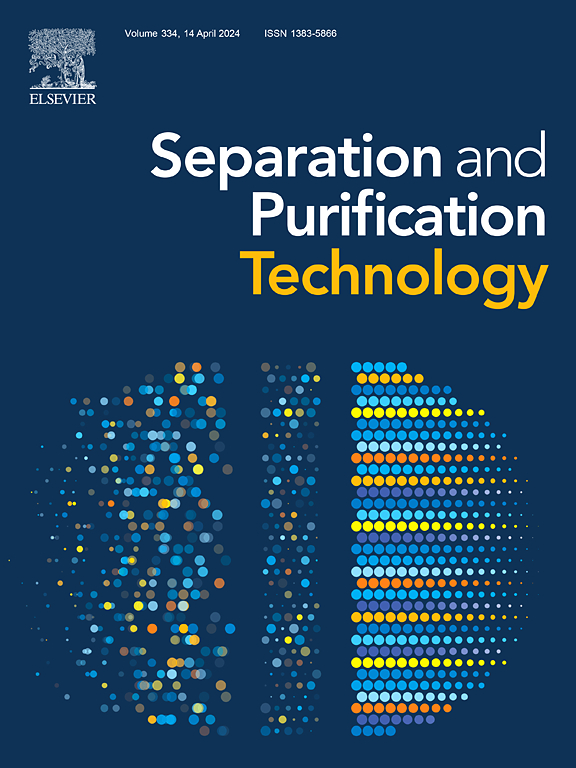Self-acceleration effect of Mn/Ce-modified carbide slag in CO2 absorption for CaO/CaCO3 energy storage
IF 8.1
1区 工程技术
Q1 ENGINEERING, CHEMICAL
引用次数: 0
Abstract
Carbide slag, a solid waste from the chlor-alkali industry, can be used for CO2 capture and energy storage. Herein, the cyclic reaction activity of Mn/Ce-modified carbide slag under energy storage conditions was studied. The Mn/Ce-modified carbide slag shows energy storage density over 2100 kJ/kg and CO2 absorption capacity of 0.52 g CO2/g sorbent after 30 cycles. Notably, both carbonation and calcination rates are accelerated with the number of cycles. This self-acceleration effect is related to the evolution of oxygen vacancy concentration and texture structure of Mn/Ce-modified carbide slag during the cycles. In the cycles, CaMnO3 in the Mn/Ce-modified carbide slag reacts with the formed CaCO3 in the carbonation stage to produce more Ca2MnO4. The formation of Ca2MnO4 increases oxygen vacancies in the Mn/Ce-modified carbide slag, significantly enhancing its CO2 adsorption capacity. Thus, the release of the increased CO2 in the calcination stage generates more pores in the 10–100 nm diameter range in the modified carbide slag, facilitating rapid carbonation. Thus, the Mn/Ce-modified carbide slag exhibits good prospect for CaO/CaCO3 thermochemical energy storage.求助全文
约1分钟内获得全文
求助全文
来源期刊

Separation and Purification Technology
工程技术-工程:化工
CiteScore
14.00
自引率
12.80%
发文量
2347
审稿时长
43 days
期刊介绍:
Separation and Purification Technology is a premier journal committed to sharing innovative methods for separation and purification in chemical and environmental engineering, encompassing both homogeneous solutions and heterogeneous mixtures. Our scope includes the separation and/or purification of liquids, vapors, and gases, as well as carbon capture and separation techniques. However, it's important to note that methods solely intended for analytical purposes are not within the scope of the journal. Additionally, disciplines such as soil science, polymer science, and metallurgy fall outside the purview of Separation and Purification Technology. Join us in advancing the field of separation and purification methods for sustainable solutions in chemical and environmental engineering.
 求助内容:
求助内容: 应助结果提醒方式:
应助结果提醒方式:


